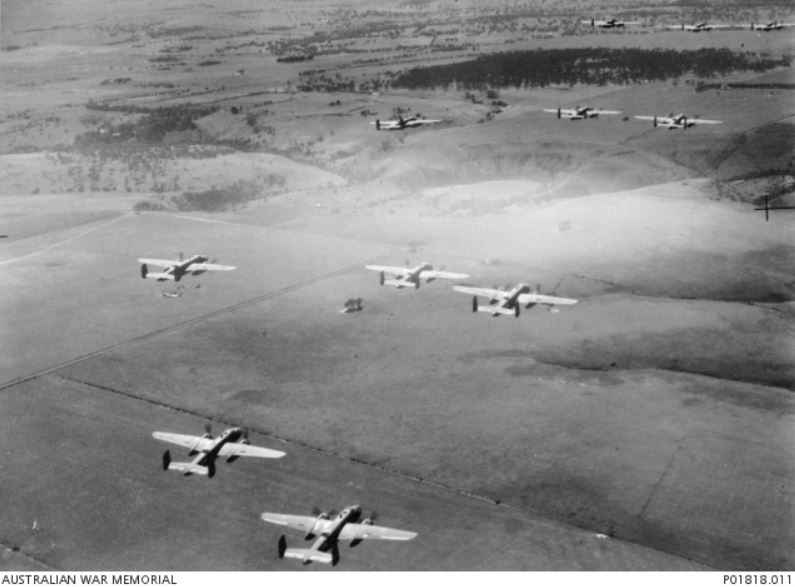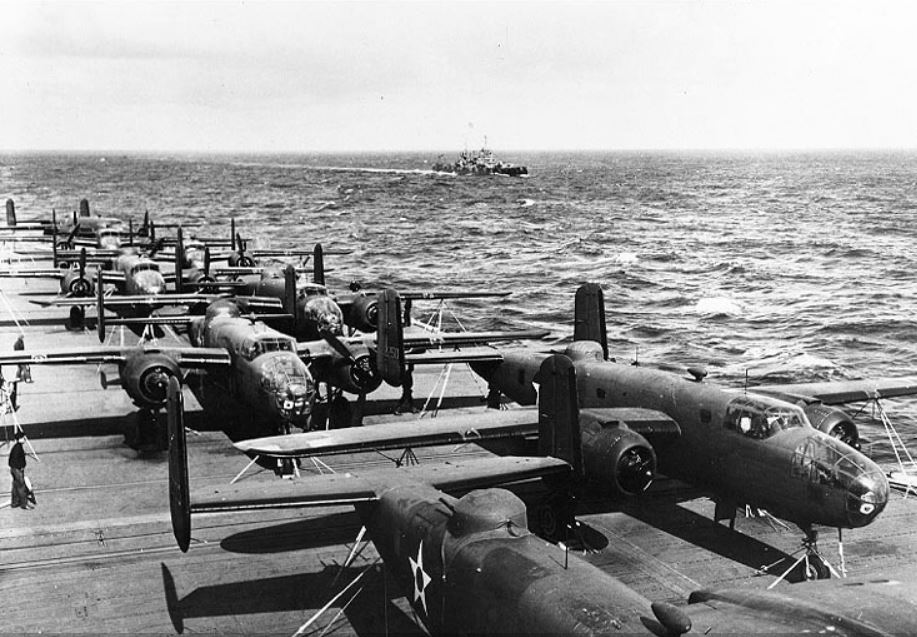Difference between revisions of "North American B-25 Mitchell"
From Our Contribution
(Created page with "{{infobox aircraft | image = File:North_American_B-25_Mitchell.jpg | caption = RAAF B-25s on a training flight near Canberra in 1942 - AWM P01818.011 | i...") |
(→Ground crew) |
||
| (2 intermediate revisions by the same user not shown) | |||
| Line 39: | Line 39: | ||
*Bombs:1,360 kg. Could also hold one torpedo or racks for 8 rockets | *Bombs:1,360 kg. Could also hold one torpedo or racks for 8 rockets | ||
| − | == | + | ===Ground crew=== |
| + | ====[[No. 5 Aircraft Depot RAAF]]==== | ||
| + | *[[Alfred Ensor Hand]] 7 Apr - 23 Jul 1942 | ||
| + | *[[Francis Neal McGurk]] 14 Sep - 28 Feb 1944 | ||
[[category:Aircraft]] | [[category:Aircraft]] | ||
Latest revision as of 01:22, 20 June 2022
Remarks
The B-25 Mitchell was active in all theatres of WW2. It was a safe and forgiving plane to fly, and although very noisy for crew, it could withstand tremendous punishment. Designed as a medium bomber it was also used as a gunship. The majority of the B-25's were used against Japan in the Pacific theatre from Alaska to Burma and New Guinea. A very capable anti-shipping aircraft leading to use as a ground level strafing aircraft in the islands.
In the Middle East and Italy it was used to good effect against airfields and motorised columns of troops. In Europe the RAF used them as a bomber, and then after the Normandy invasion as ground support aircraft. The B-25B first gained fame as the bomber used in the 18 April 1942 Doolittle Raid, in which 16 B-25Bs led by Lieutenant Colonel Jimmy Doolittle attacked mainland Japan, four months after the bombing of Pearl Harbor. The raiders took off from the carrier USS Hornet and successfully bombed Tokyo and four other Japanese cities without loss.
The Australians received Mitchells by the spring of 1944. The joint Australian-Dutch No. 18 (Netherlands East Indies) Squadron RAAF had more than enough Mitchells for one squadron, so the surplus went to re-equip the RAAF's No. 2 Squadron, replacing their Beauforts.
General characteristics
- Crew: five
- Length: 16.13 m
- Wingspan: 20.60 m
- Height: 4.98 m
- Empty weight: 8,836 kg
- Max takeoff weight: 15,876 kg
- Powerplant: 2 x Wright R-2600-92 Twin Cyclone engines 1,300 kw each
- Maximum speed: 438 km/h at 4,000m
- Range: 2,170 km
- Service ceiling: 7,400 m
- Armament
- Guns: 12-18 0.50 in machine guns and 1 x 75 mm cannon
- Bombs:1,360 kg. Could also hold one torpedo or racks for 8 rockets
Ground crew
No. 5 Aircraft Depot RAAF
- Alfred Ensor Hand 7 Apr - 23 Jul 1942
- Francis Neal McGurk 14 Sep - 28 Feb 1944

